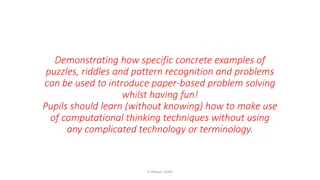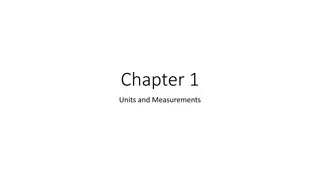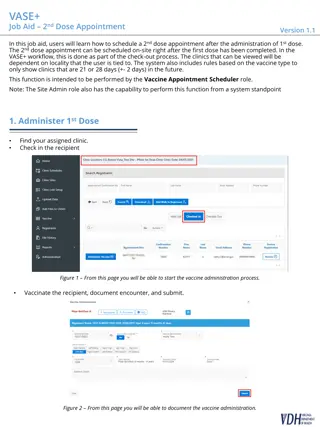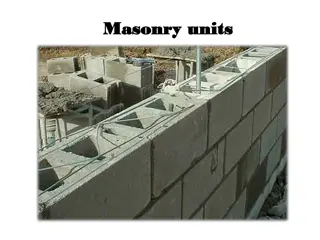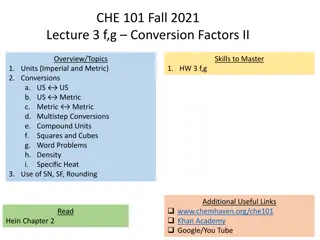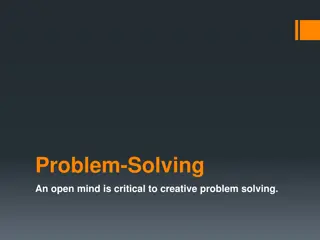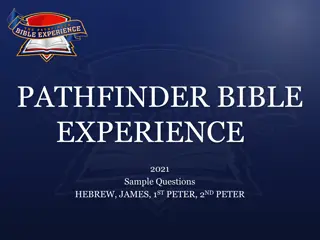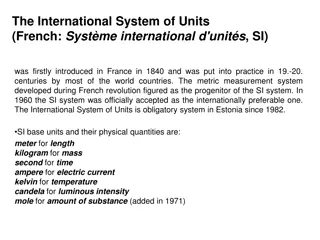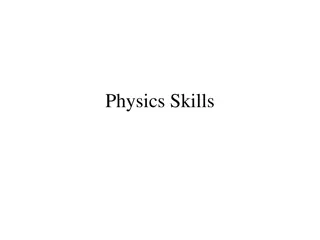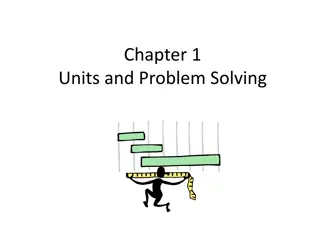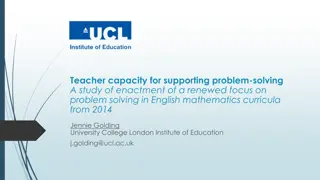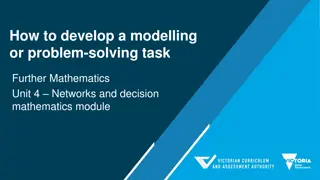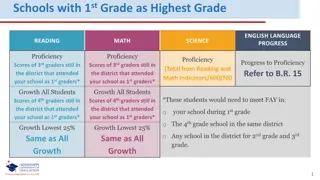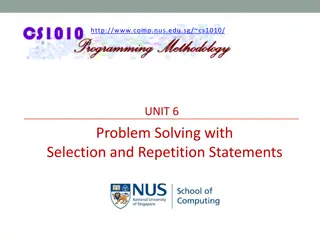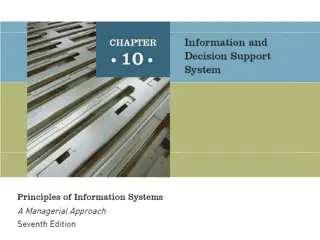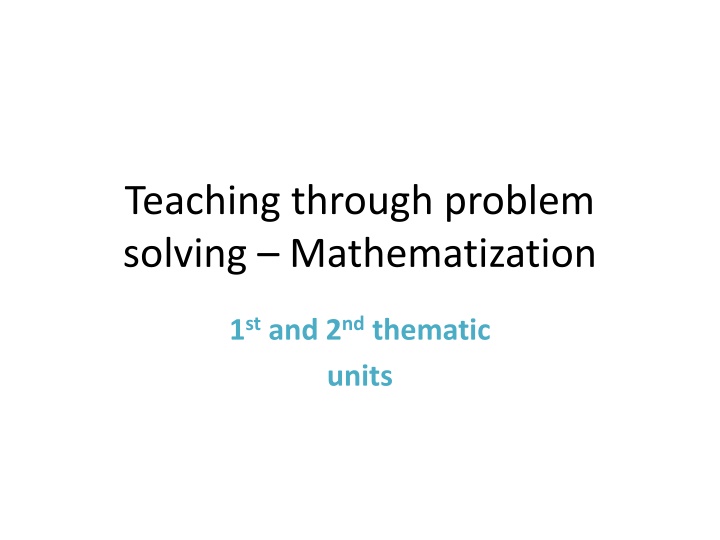
Exploring Mathematical Problem Solving Through Curriculum Analysis
Delve into the world of mathematical problem solving through an in-depth discussion on the definition of mathematical problems, the role of problem-solving in school textbooks, and the contributions of renowned figures like Polya. Explore various themes such as different types of math problems, open-ended tasks, and the integration of problem-solving in curricular materials. Discover how problem-solving enhances mathematical thinking and sense-making in education.
Download Presentation

Please find below an Image/Link to download the presentation.
The content on the website is provided AS IS for your information and personal use only. It may not be sold, licensed, or shared on other websites without obtaining consent from the author. If you encounter any issues during the download, it is possible that the publisher has removed the file from their server.
You are allowed to download the files provided on this website for personal or commercial use, subject to the condition that they are used lawfully. All files are the property of their respective owners.
The content on the website is provided AS IS for your information and personal use only. It may not be sold, licensed, or shared on other websites without obtaining consent from the author.
E N D
Presentation Transcript
Teaching through problem solving Mathematization 1stand 2ndthematic units
Study materials for our next meeting 1stUnit : what is a mathematical problem? Are there different type of math problems? How Polya contributing in the teaching practice of problem solving? OECD Education Working Papers No. 268 Schoenfeld, A. H. (1992). Learning to think mathematically: Problem solving, metacognition, and sense making in mathematics. In D. A. Grouws (Ed.), Handbook of research on mathematics teaching (pp. 334 370). New York: MacMillan Publishing. 2ndunit: The role of problems in school textbooks in your country and in general. Stacey, K. (2005). The place of problem solving in contemporary mathematics curriculum documents. Journal of Mathematical Behaviour, 24, 341 350. Zawojewski, J. S., Magiera, M., & Lesh, R. (2013). A proposal for a problem-driven mathematics curriculum framework. The Mathematics Enthusiast, 10(1 & 2), 469 506 National Council of Teachers of Mathematics. (2009). Focus in high school mathematics: Reasoning and sense making. Reston, VA: Author. Open ended problems Bingolbali, E. (2011). Multiple Solutions to Problems in Mathematics Teaching: Do Teachers Really Value Them?. Australian Journal of Teacher Education, 36(1). Kwon, O. N., Park, J. H., & Park, J. S. (2006). Cultivating divergent thinking in mathematics through an open-ended approach. Asia Pacific Education Review, 7(1), 51-61. Sullivan, P., Warren, E., & White, P. (2000). Students responses to content specific open-ended mathematical tasks. Mathematics education research journal, 12(1), 2-17.
1stunit choose one of the following What is a mathematical problem? (look at definitions in the following documents and write an essay (200-300 words) on ways of defining a mathematical problem in the literature OECD Education Working Papers No. 268 Schoenfeld, A. H. (1992). Learning to think mathematically: Problem solving, metacognition, and sense making in mathematics. In D. A. Grouws (Ed.), Handbook of research on mathematics teaching (pp. 334 370). New York: MacMillan Publishing Polya s teaching (ppt)
2ndunit The role of problems in school textbooks in your country and in general. Choose one of the following themes What is the role of problem solving in the school math textbooks in your country? Present examples of mathematical problem-tasks in your math texts Choose one text (e.g., Grade 7 math) and try to categorize them in terms of a. the context b. the mathematical aspects c. the open-ended characteristic Write an essay (200-300 words) on the role of problems in curricular materials Stacey, K. (2005). The place of problem solving in contemporary mathematics curriculum documents. Journal of Mathematical Behaviour, 24, 341 350. Zawojewski, J. S., Magiera, M., & Lesh, R. (2013). A proposal for a problem- driven mathematics curriculum framework. The Mathematics Enthusiast, 10(1 & 2), 469 506 National Council of Teachers of Mathematics. (2009). Focus in high school mathematics: Reasoning and sense making. Reston, VA: Author. Gravemeijer, K., & Terwel, J. (2000). Hans Freudenthal: a mathematician on didactics and curriculum theory. Journal of curriculum studies, 32(6), 777-796.

